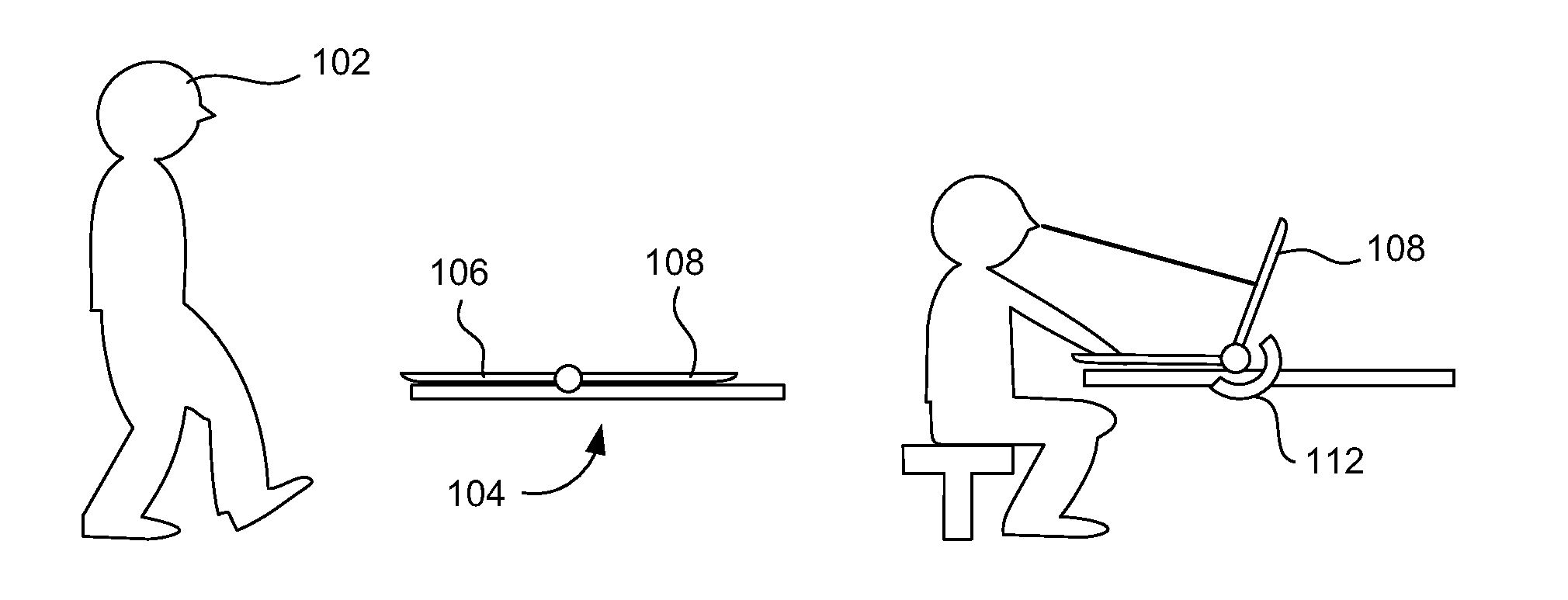Actuated adaptive display systems
a display system and display technology, applied in computing, instruments, electric digital data processing, etc., can solve the problems of not being able to adapt to user activities and positions, today's computer displays do not adjust their physical orientation to user's relative position or eye gaze, and are not ergonomi
- Summary
- Abstract
- Description
- Claims
- Application Information
AI Technical Summary
Benefits of technology
Problems solved by technology
Method used
Image
Examples
Embodiment Construction
[0024]Various embodiments of the present invention describe display systems that adjust overall orientation, shape, and, where possible, curvature in accordance with a user's position and activity. In one embodiment, a display system, as used herein, is made up of multiple (two or more) planar display components. In another embodiment, a display system may include a single curved display component. A display component is referred to as a display element or simply as a display. Other lay or common terms used to refer to display component are “monitor” and “screen,” however, to avoid confusion, the description herein uses the terms display or display element to refer to a single display component. As noted, a display system consists of either two or more separate planar display elements which are actuated separately or a single curved display element. A curved display element may be a concave, convex or irregularly curved display which dynamically changes parameter of its curvature vi...
PUM
 Login to View More
Login to View More Abstract
Description
Claims
Application Information
 Login to View More
Login to View More - R&D
- Intellectual Property
- Life Sciences
- Materials
- Tech Scout
- Unparalleled Data Quality
- Higher Quality Content
- 60% Fewer Hallucinations
Browse by: Latest US Patents, China's latest patents, Technical Efficacy Thesaurus, Application Domain, Technology Topic, Popular Technical Reports.
© 2025 PatSnap. All rights reserved.Legal|Privacy policy|Modern Slavery Act Transparency Statement|Sitemap|About US| Contact US: help@patsnap.com



